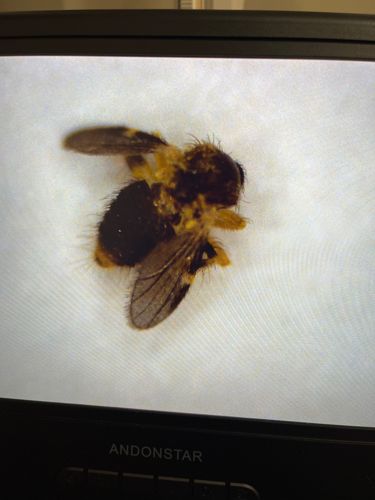Fruit fly, Vinegar fly
Scientific Name: Drosophila melanogaster (likely, given appearance as a common species often observed under microscopes)
Order & Family: Order: Diptera, Family: Drosophilidae
Size: 2-4 mm (adults)

Natural Habitat
Widely distributed globally, particularly in areas with rotting fruit or fermenting substances. Common in homes, orchards, and vineyards.
Diet & Feeding
Adults feed on yeast and bacteria found on fermenting fruits and vegetables. Larvae feed on microorganisms within decaying plant matter.
Behavior Patterns
Fruit flies are attracted to ripe, overripe, and fermenting fruits and vegetables. Females lay eggs on these food sources. Their life cycle is short, often completing in about 1-2 weeks under optimal conditions. They exhibit complex mating rituals and are known for their rapid reproduction.
Risks & Benefits
Potential risks include being a nuisance pest in homes and commercial settings where fresh produce is handled. They can also contaminate food with bacteria and yeast from their bodies or if present in large numbers. Benefits predominantly come from their extensive use as a model organism in genetic and biological research due to their short life cycle, ease of breeding, and well-mapped genome, contributing significantly to our understanding of genetics, development, and neurobiology.
Identified on: 9/25/2025